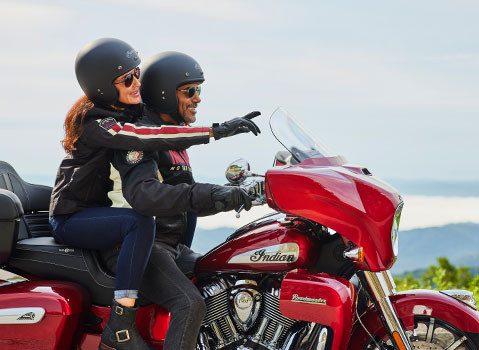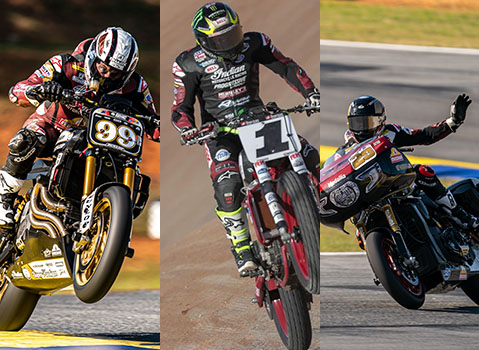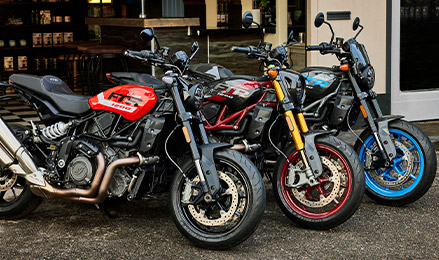
Standard Motorcycles vs. Naked Motorcycles
At first glance, naked and standard bikes might seem very similar. But spend some quality time with each style, and their unique personalities come to light.
Standard bikes are seasoned classics, having been around since the early days of motoring. They’ve been used on the track from the beginning, with a lineage rich in racing history. That said, standard motorcycles are versatile, comfortable and perfect for a wide range of riding styles—including beginners.
Naked motorcycles, on the other hand, can be described as a “close cousin” to standard bikes. While they’re typically very similar in a structural sense, naked bikes boast a more industrial, exposed look—plus increased agility and handling.
Let’s dive in and explore the key differences between standard and naked bikes.

What’s a Standard Motorcycle?
Standard motorcycles feature moderate bodywork and balanced proportions, giving them a refined appearance without tipping into the sportiness or bulkiness of other styles. With an upright seating position and the perfect blend of power and agility, these versatile bikes are a great fit for riders of all types.
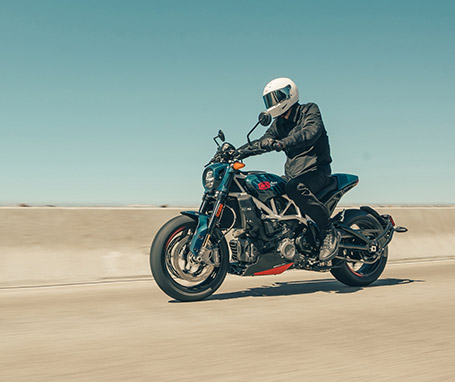
Upright Riding Position
Standard bikes usually feature waist-height handlebars and foot pegs directly beneath the rider, encouraging an upright and comfortable riding position. This allows your spine to remain in a neutral and relaxed position, minimizing stress on the neck and back during long rides. An upright riding position is balanced, too—giving riders the option to shift into a more aggressive stance as the situation demands.

Fairings
Typically, standard motorcycles come with minimal fairings—or none at all. This maintains their balanced, all-rounder persona with the added bonus of adaptability. Adding fairings can be part of the customization process, allowing riders to tailor their bike to specific needs or aesthetic preferences.

Performance and Handling
At a high level, standard motorcycles can have any engine configuration with or without liquid cooling. It's an incredibly diverse style of bike in terms of engine type and size, but in general, you can think of standard bikes as jacks-of-all-trades with enough grunt for both city rides and open roads—without going to extremes. Due to their middle-of-the-road weight, responsive suspension and adaptable riding position, these bikes are easy to handle whether you're new to riding or a seasoned vet.

Commuting on a Standard Motorcycle
Standard bikes are the unsung heroes of commuting. With their fuel-efficient engines, comfortable, balanced seating position and ease of maintenance, they’re a fantastic option for daily riders who are looking to add a little excitement to their commute. Their minimal bodywork also makes it easy to add removable storage like this all-weather bag, keeping your belongings safe in inclement conditions.

Popular for Beginners
Standard motorcycles can offer an ideal starting point for beginning riders— combining affordability, lightweight design, a comfortable riding position and easy maintenance. They can be a practical, versatile choice for beginners, while offering plenty of room to grow as skills develop.

Hooligan Racing
Hooligan racing traces its roots back to the 1940s—a simpler time in the world of motoring. There were no purpose-built racing bikes, so the “run what you brung” ethos was born. Racers would ride their motorcycle to an event, race it, then ride it home. Adaptable, balanced and versatile, standard bikes became the de facto choice for hooligan racers—and that legacy is still on display today in motorcycles like the Indian FTR R Carbon.
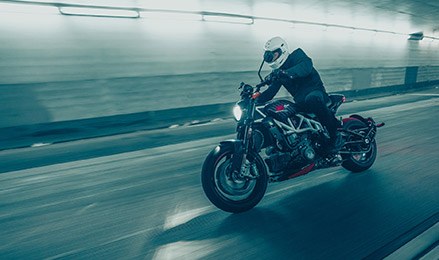
What’s a Naked Motorcycle?
While typically quite similar to standard motorcycles in engine displacement and frame design, naked bikes—or “naked sportbikes”, as they are sometimes referred to—take a “less-is-more” approach. They’re stripped of non-essential bodywork to make a visual statement and decrease weight, creating the perfect style of motorcycle for urban commuting and spirited cornering.
Naked Motorcycle Features
As a general rule, naked bikes and naked sportbikes feature a more modern and aggressive style than their standard counterparts. The engine and frame are usually in full view, delivering an unfiltered look at the heart and soul of the motorcycle. This minimalistic approach means that there’s a purpose to every design element, with no room for unnecessary frills. Every line, curve and component is intentional—contributing to both performance and aesthetics. Less componentry means less weight, which leads to improved handling, while the absence of bodywork puts a visual spotlight on the bike’s raw machinery. This direct connection between form and function is the hallmark of naked motorcycles.

The Best of Both Worlds
While the differences can be subtle, standard and naked motorcycles each bring a distinct and unique personality to the road. Standard bikes are balanced, versatile and adaptable, while naked bikes flaunt exposed parts with increased agility and handling. Some motorcycles—like the Indian FTR—straddle the line between the two styles, delivering the best of both worlds. With a high-revving, liquid-cooled V-twin engine, balanced riding position and stripped-down style, FTR is a true unicorn—and the perfect choice for those seeking an unmistakable ride with
the performance to back it up.






